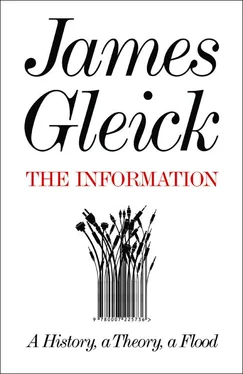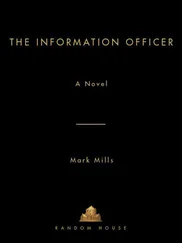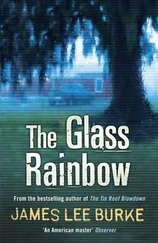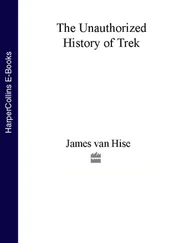As hard as the OED tries to embody the language’s fluidity, it cannot help but serve as an agent of its crystallization. The problem of spelling poses characteristic difficulties. “ Every form in which a word has occurred throughout its history” is meant to be included. So for mackerel (“a well-known sea-fish, Scomber scombrus , much used for food”) the second edition in 1989 listed nineteen alternative spellings. The unearthing of sources never ends, though, so the third edition revised entry in 2002 listed no fewer than thirty: maccarel, mackaral, mackarel, mackarell, mackerell, mackeril, mackreel, mackrel, mackrell, mackril, macquerel, macquerell, macrel, macrell, macrelle, macril, macrill, makarell, makcaral, makerel, makerell, makerelle, makral, makrall, makreill, makrel, makrell, makyrelle, maquerel , and maycril . As lexicographers, the editors would never declare these alternatives to be wrong: misspellings. They do not wish to declare their choice of spelling for the headword, mackerel , to be “correct.” They emphasize that they examine the evidence and choose “the most common current spelling.” Even so, arbitrary considerations come into play: “Oxford’s house style occasionally takes precedence, as with verbs which can end -ize or -ise, where the -ize spelling is always used.” They know that no matter how often and how firmly they disclaim a prescriptive authority, a reader will turn to the dictionary to find out how a word should be spelled. They cannot escape inconsistencies. They feel obliged to include words that make purists wince. A new entry as of December 2003 memorialized nucular : “= nuclear a . (in various senses).” Yet they refuse to count evident misprints found by way of Internet searches. They do not recognize straight-laced , even though statistical evidence finds that bastardized form outnumbering strait-laced . For the crystallization of spelling, the OED offers a conventional explanation: “Since the invention of the printing press, spelling has become much less variable, partly because printers wanted uniformity and partly because of a growing interest in language study during the Renaissance.” This is true. But it omits the role of the dictionary itself, arbitrator and exemplar.
For Cawdrey the dictionary was a snapshot; he could not see past his moment in time. Samuel Johnson was more explicitly aware of the dictionary’s historical dimension. He justified his ambitious program in part as a means of bringing a wild thing under control—the wild thing being the language, “which, while it was employed in the cultivation of every species of literature, has itself been hitherto neglected; suffered to spread, under the direction of chance, into wild exuberance; resigned to the tyranny of time and fashion; and exposed to the corruptions of ignorance, and caprices of innovation.” Not until the OED , though, did lexicography attempt to reveal the whole shape of a language across time. The OED becomes a historical panorama. The project gains poignancy if the electronic age is seen as a new age of orality, the word breaking free from the bonds of cold print. No publishing institution better embodies those bonds, but the OED , too, tries to throw them off. The editors feel they can no longer wait for a new word to appear in print, let alone in a respectably bound book, before they must take note. For tighty-whities (men’s underwear), new in 2007, they cite a typescript of North Carolina campus slang. For kitesurfer , they cite a posting to the Usenet newsgroup alt.kite and later a New Zealand newspaper found via an online database. Bits in the ether.
When Murray began work on the new dictionary, the idea was to find the words, and with them the signposts to their history. No one had any idea how many words were there to be found. By then the best and most comprehensive dictionary of English was American: Noah Webster’s, seventy thousand words. That was a baseline. Where were the rest to be discovered? For the first editors of what became the OED , it went almost without saying that the source, the wellspring, should be the literature of the language—particularly the books of distinction and quality. The dictionary’s first readers combed Milton and Shakespeare (still the single most quoted author, with more than thirty thousand references), Fielding and Swift, histories and sermons, philosophers and poets. Murray announced in a famous public appeal in 1879:
A thousand readers are wanted. The later sixteenth-century literature is very fairly done; yet here several books remain to be read. The seventeenth century, with so many more writers, naturally shows still more unexplored territory.
He considered the territory to be large but bounded. The founders of the dictionary explicitly meant to find every word, however many that would ultimately be. They planned a complete inventory. Why should they not? The number of books was unknown but not unlimited, and the number of words in those books was countable. The task seemed formidable but finite.
It no longer seems finite. Lexicographers are accepting the language’s boundlessness. They know by heart Murray’s famous remark: “The circle of the English language has a well-defined centre but no discernable circumference.” In the center are the words everyone knows. At the edges, where Murray placed slang and cant and scientific jargon and foreign border crossers, everyone’s sense of the language differs and no one’s can be called “standard.”
Murray called the center “well defined,” but infinitude and fuzziness can be seen there. The easiest, most common words—the words Cawdrey had no thought of including—require, in the OED , the most extensive entries. The entry for make alone would fill a book: it teases apart ninety-eight distinct senses of the verb, and some of these senses have a dozen or more subsenses. Samuel Johnson saw the problem with these words and settled on a solution: he threw up his hands.
My labor has likewise been much increased by a class of verbs too frequent in the English language, of which the signification is so loose and general, the use so vague and indeterminate, and the senses detorted so widely from the first idea, that it is hard to trace them through the maze of variation, to catch them on the brink of utter inanity, to circumscribe them by any limitations, or interpret them by any words of distinct and settled meaning; such are bear, break, come, cast, full, get, give, do, put, set, go, run, make, take, turn, throw . If of these the whole power is not accurately delivered, it must be remembered, that while our language is yet living, and variable by the caprice of every one that speaks it, these words are hourly shifting their relations, and can no more be ascertained in a dictionary, than a grove, in the agitation of a storm, can be accurately delineated from its picture in the water.
Johnson had a point. These are words that any speaker of English can press into new service at any time, on any occasion, alone or in combination, inventively or not, with hopes of being understood. In every revision, the OED ’s entry for a word like make subdivides further and thus grows larger. The task is unbounded in an inward-facing direction.
The more obvious kind of unboundedness appears at the edges. Neologism never ceases. Words are coined by committee: transistor , Bell Laboratories, 1948. Or by wags: booboisie , H. L. Mencken, 1922. Most arise through spontaneous generation, organisms appearing in a petri dish, like blog (c. 1999). One batch of arrivals includes agroterrorism , bada-bing , bahookie (a body part), beer pong (a drinking game), bippy (as in, you bet your ———), chucklesome , cypherpunk , tuneage , and wonky . None are what Cawdrey would have seen as “hard, usual words,” and none are anywhere near Murray’s well-defined center, but they now belong to the common language. Even bada-bing: “Suggesting something happening suddenly, emphatically, or easily and predictably; ‘Just like that!’, ‘Presto!’ ” The historical citations begin with a 1965 audio recording of a comedy routine by Pat Cooper and continue with newspaper clippings, a television news transcript, and a line of dialogue from the first Godfather movie: “You’ve gotta get up close like this and bada-bing! you blow their brains all over your nice Ivy League suit.” The lexicographers also provide an etymology, an exquisite piece of guesswork: “Origin uncertain. Perh. imitative of the sound of a drum roll and cymbal clash. Perh. cf. Italian bada bene mark well.”
Читать дальше











